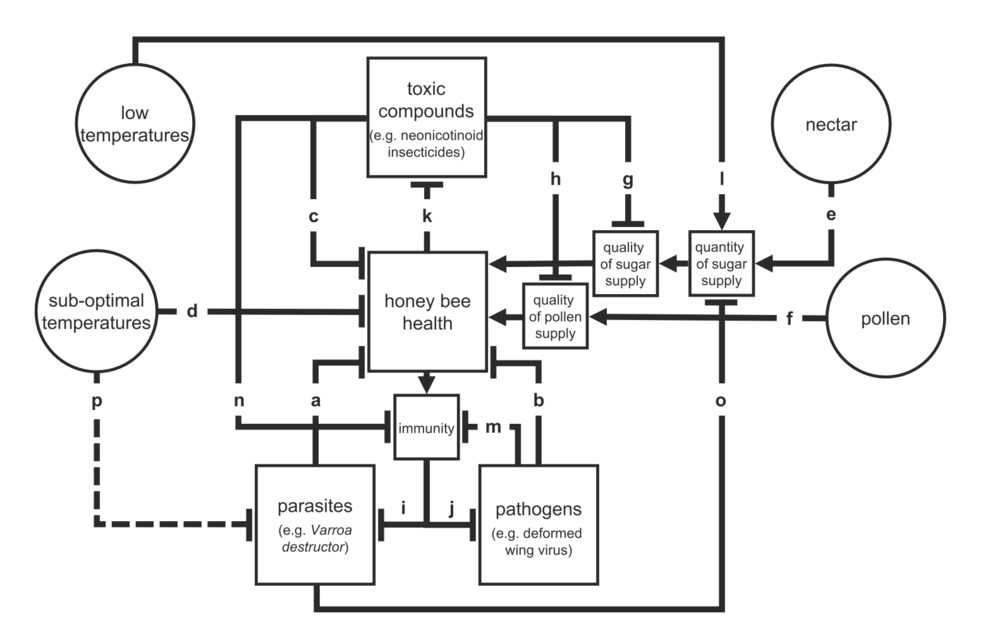pan-european assessment, monitoring, and mitigation of stressors on the health of bees
PoshBee paper: insights into the web of interactions amongst factors influencing honey bee health
The PoshBee project has a new addition to its collection of scientific publications – "A deeper understanding of system interactions can explain contradictory field results on pesticide impact on honey bees", published last week in the journal Nature Communications.

The health of honey bees as influenced by multiple factors and their effects.
The impacts of pesticides – particularly neonicotinoid insecticides – on pollinators have caused widespread concern, as they have both lethal and sublethal effects on bees. These negative impacts have been established in the laboratory, but field testing has so far resulted in contradictory outcomes and no clear insights. Thus, in their recently-published paper, PoshBee partners set out to gain a mechanistic understanding of the processes underlying these contrasting field results by adopting a systems biology approach. They focused on the system properties dependent on its architecture, instead of on the – often unknown – strength of each single interaction (i.e., any relationship between two components of the system). Caged honey bees were then used to test in vivo the predictions derived from the modelling analysis.
The paper demonstrates how the impact of toxic compounds on honey bee health and colony stability can be affected by concurrent bee stressors, eventually leading to multiple outcomes depending on initial conditions. These results could have significant impacts on the application of field studies to complex systems.
Read the full paper here.